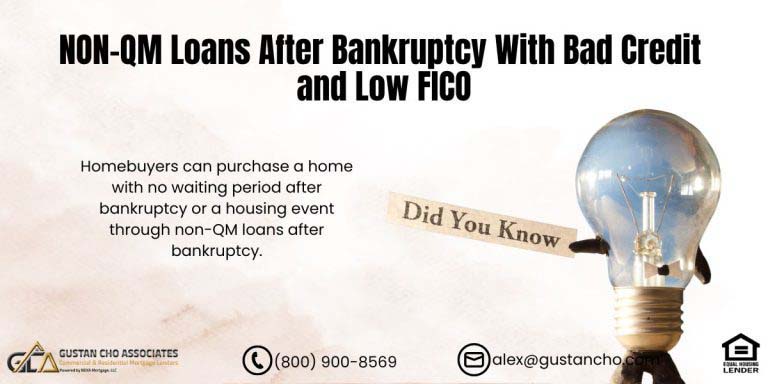In this blog, we will cover and discuss the Jumbo mortgage with 10% down payment and no PMI. A jumbo mortgage is a residential mortgage loan that exceeds the conforming mortgage loan limits. The conforming mortgage loan limit for 2024 is capped at $766,550 in most parts of the United States with the exception of high-cost areas where the high-balance loan limit on single-family homes is $1,149,825. Alaska, Guam, Hawaii, and the U.S. Virgin Islands has higher loan limit on FHA and conforming loans. Many counties in higher-priced counties have higher loan limits due to being priced in high-cost counties. For example, many counties in California are designated high-cost areas due to home prices that are substantially higher than the median-priced home prices in the nation. In the following paragraphs, we will cover qualifying for jumbo mortgage with 10% down payment with no PMI.
What Is Considered To Be a Jumbo Loan?
A frequently asked question from homebuyers of high-end homes is what is considered to be a jumbo loan. A home loan that exceeds the maximum Fannie Mae or Freddie Mac conforming loan limit is considered to be a jumbo loan. Any home loan that exceeds the maximum conforming loan limit is called non-conforming loans or jumbo loans. The above are government high-balance jumbo loans with a maximum loan limit of $1,149,825. Traditional jumbo loans are any home loan exceeding the traditional conforming loan limit of Fannie Mae and Freddie Mac. Non-QM jumbo loans are alternative jumbo loan programs such as bank statement loans, non-QM mortgages, and no-doc loans.
What is Considered a High-Balance Jumbo Loan?
There is a limit to an FHA and conforming high-balance jumbo loan. Non-QM loans have a loan limit depending on the wholesale jumbo mortgage lender. VA jumbo loans or VA high-balance jumbo loans have no maximum loan limit. Currently, the 2024 conforming loan limit is capped at $766,550 for single-family homes in all states in the United States with the exception of Alaska, Hawaii, Guam, the U.S. Virgin Islands, and designated counties throughout the nation designated high-cost areas. Speak With Our Loan Officer for Jumbo Loans
High-Balance Jumbo Loans in High-Cost Areas
Designated high-cost counties have high-balance jumbo loans which are capped at $1,149,825. FHA jumbo loans also referred to as high-balance FHA loans, are capped at $1,149,825 on single-family homes for 2024. Conforming Jumbo loans, also referred to as high-balance jumbo loans, are also capped at $1,149,825 for single-family homes in 2024.
Traditional Jumbo Mortgage Loans
A jumbo mortgage typically refers to government-sponsored enterprises like Fannie Mae and Freddie Mac. These limits vary by location but generally range from $766,550 to $1,149,825 as of 2024. When considering a jumbo mortgage with a 10% down payment, it’s important to note that lenders often have stricter requirements for these loans than conventional mortgages. Here are some key points to consider. Lenders typically require a higher credit score for jumbo loans, often 700 or higher.
Proof of Income and Assets
Lenders require documentation of your income and assets to ensure you can afford the loan. Your debt-to-income ratio (DTI) will be scrutinized more closely for a jumbo loan. Typically, lenders prefer a DTI of 43% or lower. Lenders may require you to have reserves to cover expenses in case of financial hardship.
Private Mortgage Insurance (PMI) on Traditional and Non-QM Jumbo Loans
Non-QM Jumbo loans do not require private mortgage insurance. With traditional jumbo loans, a down payment of less than 20%, you’ll likely need to pay for private mortgage insurance, which adds to your monthly expenses. Interest rates for jumbo mortgage loans are higher than conforming loans. Rates are priced based on several factors, including credit scores and loan-to-value. The maximum jumbo loan amount will depend on various factors, including your creditworthiness, income, and assets. Shopping with multiple lenders is essential to finding the best terms and rates for your jumbo mortgage. Working with an experienced and knowledgeable loan officer who works for an aggressive lender will help you find the right loan for your needs.
Is There a Limit To a Jumbo Loan?
Not all jumbo mortgage lenders have the same loan limit to a jumbo loan. The maximum loan limit on a jumbo loan depends on the individual wholesale mortgage lender. Conforming loan limits are higher in high-cost areas. Homebuyers exploring mortgage options may hear the term “jumbo loan.” If you do, you are looking at properties that are more expensive for the area. If you are considering homes requiring a mortgage that exceeds $766,550, it’s a good idea to find out more about jumbo loans and discuss them with mortgage lenders. Gustan Cho Associates are experts in originating, underwriting, and funding 90% LTV jumbo mortgages. A large percentage of our business at Gustan Cho Associates is originating and funding 10% down payment jumbo loans.
Why Would Someone Get a Jumbo Loan?
For example, for home buyers purchasing a $1,000,000 home and can afford to put a substantial down payment on this home purchase, the maximum a mortgage lender will be able to lend you is $766,550. The $766,550 is the maximum conforming mortgage loan limit. If the homebuyer only has less than a 20% down payment, this can present a problem. This is because the maximum mortgage lender’s limit to lending is capped at $766,550. In this case scenario, buyers would need to seek a jumbo mortgage that requires a less than 20% down payment.
High-Balance FHA, VA, Conforming Loans
One of the most frequently asked question from homebuyers is are high balance and jumbo same thing? The answer to this question is yes and no and we will explain why. A high-balance loan is a traditional FHA, VA, and conventional loan that has a higher loan limit than traditional loans due to the homes in the area exceed the median home prices in most of the United States.High-Balance Jumbo Loans
High balance FHA jumbo loans are FHA loans with higher loan limits considered by the U.S. Department of Housing and Urban Development (HUD). High balance conforming loans are conforming loans with higher loan limits than most of the areas in the nation and set by the Federal Housing Finance Agency (FHFA). VA has no maximum loan limit. There are hundreds of independent Jumbo mortgage lenders. Each individual jumbo lender has its own jumbo loan requirements and sets its own loan limits.What Are High-Balance VA Jumbo Loans
VA Jumbo Loans, also called high balance VA jumbo loans is no different than standard VA loans. However, it is called VA jumbo loans due to pricing adjustments. High-balance loans normally have higher rates than traditional government loans. Any mortgage loan that is higher than a $766,550 loan balance is called a non-conforming loan or jumbo loan.What Are Non-Conforming Loans?
Jumbo mortgages are referred to as non-conforming mortgage loans. Jumbo loans are referred to as non-conforming loans because they do not conform to Fannie Mae and Freddie Mac Loan Limits. Jumbo mortgage loans are home loans over the $776,550 conforming loan limits. There is no down payment requirements on VA jumbo loans. Click here to apply for Non-Conforming LoansWhat Classifies As a Jumbo Loan?
Jumbo lenders are different than conventional conforming lenders. This is because each jumbo lenders have its own lending requirements and guidelines. In general, most lenders look at jumbo loans as riskier loans than conforming loans. This is because in the event lenders foreclose a higher-end home, it takes substantially longer to liquidate it on the open market.
Why Do Lenders Consider Jumbo Loans as Riskier Loans
It takes longer to sell a higher-end 5,000 square feet home than a traditional 2,000 square feet home. Therefore, lending requirements on jumbo loans are higher than on conforming loans. Most lenders require a higher down payment of 20% to 25% and a lower debt-to-income ratio on jumbo loans. Lenders normally have a maximum 40% cap on debt to income ratio no jumbo loans. Minimum credit scores are at 700 on jumbo mortgages.
How Does Jumbo Mortgage With 10% Down Payment and No PMI Work?
Gustan Cho Associates offers a 10% down payment jumbo loan program. This unique 90% LTV jumbo mortgage is a traditional jumbo loan program and NOT a non-QM program. The maximum debt-to-income ratio is capped at 50%. The minimum credit score requirement for this 10% down payment jumbo mortgage program is 720 FICO. A 720 FICO credit score is considered extremely low for a jumbo mortgage loan applicant.
How Can I Qualify For a Jumbo Mortgage With 10% Down Payment Without PMI?
In general, most Jumbo Mortgage lenders require a minimum of 20% down payment with a 700 credit score. Gustan Cho Associates offers a 10% down payment for traditional jumbo and non-QM jumbo mortgages. Jumbo mortgage with a 10% down payment requires a maximum of 50% debt-to-income ratio and a minimum credit score of 660 FICO. For those who do not have a 660 credit score, we can help borrowers raise their credit scores to 660 or greater. Sometimes there are quick fixes such as paying down credit cards or establishing new positive credit or even paying off certain debts. Click here to qualify for Jumbo Loans with 10% Down payment without PMI
What Is The Difference Between Traditional Versus Non-QM Jumbo Mortgages
Traditional jumbo mortgages require full documentation, high credit scores, low debt to income ratio, great credit history for the past 7 years, and high credit scores. Gustan Cho Associates offers a unique traditional jumbo mortgage with 10% down payment with no PMI. It is a full doc jumbo mortgage with a 10% down payment program that requires a 660 credit score. Other jumbo lenders do not offer this full-doc traditional loan program. Non-QM Jumbo Mortgages require 550 minimum credit scores. 10% to 20% down payment is required on non-QM jumbo mortgages. The amount of down payment depends on the borrowers’ credit scores. The maximum debt-to-income ratio on a non-QM jumbo mortgage is 55% DTI. There is no private mortgage insurance required on non-QM jumbo mortgages.
What Are The Different Types of Jumbo Mortgage Loan Programs
Besides a jumbo mortgage with a 10% down payment, there are other different types of loan programs. Gustan Cho Associates are mortgage brokers licensed n 48 states with over 170 wholesale mortgage lenders. We have dozens of wholesale jumbo mortgage lenders.
Non-QM Jumbo Loans
Some of the most popular types of jumbo mortgage loan programs include bank statement jumbo loans, jumbo loans one day out of bankruptcy and foreclosure, no-doc jumbo loans, stated-income jumbo loans, second home jumbo mortgages, and jumbo mortgages with a 15% down payment.
15% Down Payment Jumbo Loans
The 15% down payment jumbo mortgage loan program lending requirements are similar to the 90% LTV jumbo mortgage program. There is no private mortgage insurance required. Mortgage rates on the 85% LTV jumbo mortgage are lower than the 90% LTV loan program.
NON-QM Jumbo Mortgages For Self-Employed Borrowers
NON-QM Jumbo Mortgages For Self-Employed Borrowers are non-conforming loans with very lax credit and DTI mortgage guidelines. There is no waiting period after housing events to qualify for non-QM jumbo mortgages. 10% to 20% down payment is required. The amount of down payment depends on the borrowers’ credit scores.
Mortgage Rates on Jumbo Loans
Mortgage Rates depend on the down payment and credit scores of borrowers. There is no private mortgage insurance required on non-QM jumbo mortgages. There are two types of non-QM jumbo mortgages. One is the standard two years W2s and tax returns required. The other type of non-QM jumbo loan is for self-employed borrowers. 12 or 24 months of bank deposits are used to calculate income. Income tax returns are not required.
Jumbo Mortgage With 10% Down Payment Bank Statement Loans
The second type of non-QM jumbo mortgages is those geared towards self-employed borrowers where no income tax returns are required. They are either 12 months or 24 months bank statement jumbo mortgage loans for self-employed borrowers. The average deposits on bank statements over the past 12 months are used to calculate monthly income.
Non-QM jumbo mortgage loans typically fall into the jumbo loan category, meaning the loan amount exceeds the conforming loan limits set by the Federal Housing Finance Agency (FHFA). In most areas, jumbo loans are for amounts over $776,550 in 2024.
Non-QM (Non-Qualified Mortgage) jumbo bank statement loans are mortgage products designed for borrowers who have difficulty documenting their income through traditional means, such as W-2s or tax returns. These loans allow borrowers to qualify based on their bank statements, particularly those with non-traditional income sources like self-employment, investment income, or commission-based earnings. Apply for Jumbo Loans with 10% Down payment bank statement loans
Here are some key points about non-QM jumbo bank statement loans:
Income Documentation on Non-QM Jumbo Mortgage Loans
Instead of tax returns or pay stubs, lenders rely on personal and business bank statements (usually 12-24 months) to calculate the borrower’s qualifying income. Lenders use different methods to calculate income from bank statements, such as taking an average of deposits or using a percentage of the total deposits as qualifying income. Borrowers may need to demonstrate significant cash reserves, often equal to several months of mortgage payments.
Down Payment Requirements on Non-QM Jumbo Mortgage Loans
Non-QM jumbo bank statement loans often require higher down payments, typically 20-30%, to offset the perceived higher risk. While credit score requirements vary among lenders, most expect a minimum credit score of 620-680 for these types of loans. Lenders may have more flexible debt-to-income ratio requirements, sometimes allowing ratios up to 50% or higher, depending on the borrower’s overall financial profile. Due to the increased risk, non-QM jumbo bank statement loans typically carry higher interest rates compared to traditional jumbo loans.
Non-QM Bank Statement Jumbo Loans With No Income Tax Returns
Non-QM jumbo bank statement loans provide an alternative financing option for borrowers with non-traditional income sources who may not qualify for a conventional or government-backed mortgage. However, these loans come with stricter underwriting guidelines and higher costs to mitigate the increased risk for lenders. Personal or business bank statements can be used. If personal bank statement deposits are used, then 100% of the deposits are averaged over the past 12 months. If business bank statement deposits are used, then 50% of deposits are averaged over the past 12 months. Bank statements used need to be from one bank and no overdrafts are allowed. If it is a joint bank statement with husband and wife, then both husband and wife need to go on loan.









